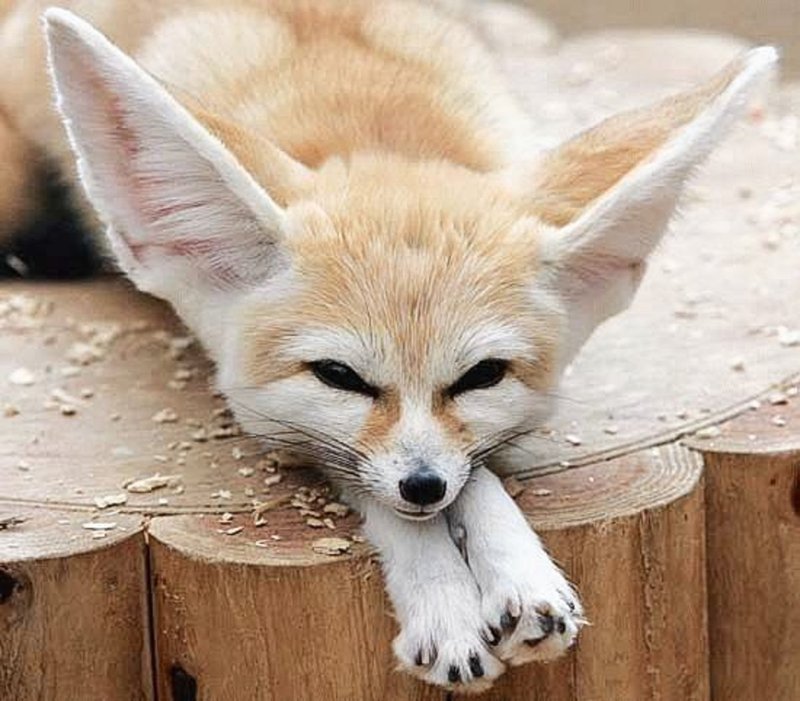
You might be wondering what makes the fennec fox stand out from other foxes. Well, it’s their unique approach to hunting and feeding that really sets them apart. Think of these foxes as the ultimate survivalists, using their keen senses and adaptable strategies to find food where most would struggle. So, let’s dig deeper into the world of the fennec fox and explore their diet and hunting techniques!
Where Do Fennec Foxes Live?
Fennec foxes are native to the arid regions of the Sahara Desert. Picture a landscape characterized by endless dunes, rugged terrain, and blistering heat. These tiny foxes have adapted specifically to this harsh climate, allowing them to thrive where few other animals can. Their fur is a sandy beige color, which helps them blend in with their surroundings, making it easier to avoid predators.
Besides the stunning landscape, the desert provides both challenges and opportunities for fennec foxes. Water sources are scarce, which means they must find food and moisture from their diet. Understanding where they live helps us appreciate their unique adaptations. It’s all about survival!
The Fennec Fox Diet
So, what exactly do fennec foxes eat? Their diet is varied and includes a mix of insects, small mammals, and even plants. Here’s a closer look at their eating habits:
- Insects: Fennec foxes love munching on insects. Beetles, grasshoppers, and ants are all on the menu. These critters are not just easy to catch; they also pack a protein punch!
- Small Mammals: They also hunt small mammals like rodents. Fennec foxes are skilled hunters, using their keen hearing to locate prey hiding underground.
- Fruits and Plants: When times are tough, they don’t shy away from munching on fruits and plants to get the necessary moisture and energy. They’ve been known to snack on dates and other desert fruits.
Fennec foxes are *opportunistic feeders*, meaning they’ll eat whatever is available. This flexibility is crucial for survival in such a challenging environment. It’s like having a diverse menu to choose from—you never know what might turn up!
Hunting Techniques of the Fennec Fox
Fennec foxes are not just cute; they’re also incredibly efficient hunters. Their hunting techniques showcase their adaptability and intelligence. Here’s how they do it:
- Keen Hearing: Those huge ears aren’t just for show! Fennec foxes can hear sounds from miles away, allowing them to pinpoint the location of their prey underground.
- Silent Approach: When they spot an insect or small mammal, they sneak up quietly, using the sand to muffle their steps. They’ve mastered the art of stealth!
- Digging Skills: If their prey is buried, fennec foxes use their strong claws to dig it out. They’re like little excavators, ready to unearth a meal!
Their hunting strategies are fascinating to watch. Imagine a tiny fox, ears perked up, focused on a small rustle in the sand. It’s a display of patience and precision—qualities that are vital for survival in the harsh desert.
Adaptations for Survival
Now, let’s talk about how these little foxes have adapted to their environment. Desert life is tough, and fennec foxes have developed several unique traits that help them thrive:
- Thermoregulation: Fennec foxes can withstand extreme temperatures. Their light-colored fur reflects sunlight during the day, while their unique body structure helps them dissipate heat.
- Nocturnal Lifestyle: They are primarily nocturnal, which means they hunt at night when temperatures are cooler. This helps them avoid the harsh heat of the day.
- Water Conservation: Fennec foxes get most of their hydration from their food. They can survive for long periods without drinking water, which is a crucial trait in the desert.
These adaptations are like built-in survival tools. Each one plays a vital role in helping fennec foxes navigate their challenging habitat.
The Importance of Social Behavior
While fennec foxes are often solitary hunters, they sometimes exhibit social behavior, especially in family groups. This aspect of their behavior can aid in hunting and provide some safety in numbers:
- Cooperative Hunting: When hunting in groups, they can cover more ground and increase their chances of finding food. It’s like having a team to tackle a big project!
- Communication: Fennec foxes communicate using a variety of sounds, helping them coordinate hunts and warn each other of danger.
- Den Sharing: They often share dens with family members, which provides warmth and protection.
Social behaviors add another layer to their survival strategy. By working together, fennec foxes enhance their chances of finding food and staying safe.
Challenges and Conservation
Despite their incredible adaptations, fennec foxes face challenges like habitat loss and hunting pressures. Here’s why conservation is essential:
- Habitat Loss: As human populations expand into desert areas, fennec foxes lose their natural homes. Protecting their environment is crucial for their survival.
- Illegal Hunting: Some people hunt fennec foxes for their fur or keep them as exotic pets. This puts additional pressure on their populations.
- Climate Change: Changing weather patterns can affect food availability, making survival even tougher.
Conservation efforts focus on preserving their habitats and raising awareness about their ecological role. Protecting fennec foxes benefits the entire desert ecosystem.
The diet and hunting strategies of the fennec fox provide a glimpse into their fascinating lives. These little foxes showcase extraordinary adaptability and skill, navigating the harsh deserts of North Africa with grace. From their keen hearing to their clever hunting techniques, each aspect of their behavior helps them thrive in an unforgiving landscape.
Understanding the fennec fox is not just about appreciating its unique charm; it’s also about recognizing the importance of conservation efforts. By protecting their habitats and raising awareness, we can help ensure that these remarkable creatures continue to roam the deserts for generations to come. So, next time you think about the fennec fox, remember: it’s not just a cute animal; it’s a true survivor!

